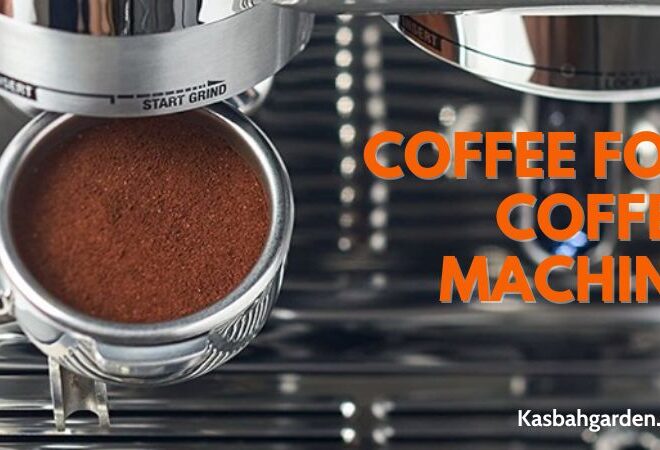Your Quick Guide: Coffee Amounts in K-Cups Revealed
In today’s fast-paced world, coffee has become more than just a morning ritual—it’s a necessary fuel that powers our day. Among the myriad ways to brew this beloved beverage, the convenience of Keurig’s K-Cups has revolutionized coffee consumption in both homes and offices. But have you ever paused to wonder exactly how much coffee is packed into each of these tiny, yet mighty pods? In our article, “How Much Coffee Is In A K-Cup,” we delve deep into the heart of your morning cup to uncover the precise measurements and the science behind K-Cup coffee. With expertise drawn from industry insiders and coffee aficionados, we explore not just the quantity of coffee in a K-Cup, but also how it impacts the strength and flavor of your brew. Whether you’re a casual coffee drinker curious about your daily caffeine intake or a connoisseur seeking to optimize your coffee experience, this article promises valuable insights that will enhance your appreciation and understanding of K-Cup coffee. So, if you’ve ever found yourself pondering the contents of that small pod as your coffee pours into your cup, prepare to be enlightened. Join us as we embark on a journey to explore the intriguing details of what’s really inside a K-Cup, and why it matters to your coffee ritual.
Understanding K-Cups and Reusable Filters
Before we delve into brewing methods, let’s look under the hood at what makes up a K-Cup.
What’s Inside a K-Cup?
Now let’s compare the materials and performance of different K-Cup types.
Dissecting Regular, Compostable, and Reusable K-Cups
K-Cups come in three main varieties:
- Traditional plastic – Not recyclable. Not biodegradable.
- Compostable – Plant-based materials. Breaks down in commercial facilities.
- Reusable – Mesh filter. Use your own coffee.
| K-Cup Type | Components | Coffee Quality |
|---|---|---|
| Traditional Plastic | #7 plastic, aluminum, plastic film | Dependable, constant |
| Compostable | Plant-based #5 plastic, mesh filter | Not as robust, but improving |
| Reusable | BPA-free #5 plastic | Controlled by you |
Reusable filters give you total control over coffee freshness, roast type, grind size, and quantity. The trade-off is slightly more work preparing your own grounds.
Now let’s look at how K-Cup coffee has evolved over time.
The Evolution of K-Cups: From Disposable to Reusable

Understanding the origins of K-Cups puts their environmental impact in perspective.
Historical Context
In the 1990s, K-Cups were invented to prepare single servings of fresh, high-quality coffee with speed and convenience. Disposable plastic pods allowed Pre measured ingredients and built-in filters streamlined the process for brewing one quick cup.
In 2004, the first Keurig K-Cup coffee maker launched. Popularity skyrocketed based on simplicity and customization. You could brew an endless variety of beverages in under a minute!
The Move Towards Sustainable Options
However, the billions of K-Cups consumed yearly created massive plastic waste. Only a small fraction of pods were recyclable or compostable.
In recent years, awareness of this issue has grown. Manufacturers now offer more eco-friendly options like plant-based compostable cups and reusable filters.
Let’s look at how to minimize waste with reusable K-Cups.
Optimizing Coffee Quantity in Reusable K-Cups
Dialing in the right coffee-to-water ratio is key for flavorful brews from a reusable K-Cup.
Determining the Ideal Coffee Amount
Use these general guidelines for measuring out your coffee grounds:
- 8-12 grams of coffee for a milder brew
- 15 grams for a moderate or standard cup
- 20+ grams for an extra bold or concentrated brew
Here are some tips to achieve your perfect strength:
- Start with 15 grams and adjust to your taste from there.
- Use a kitchen scale to precisely measure coffee weight.
- Adjust the coffee-to-water ratio up or down to control strength.
- Choose a darker roast for bolder flavor at equal amounts.
Coffee-to-Water Ratio for Optimal Brew
The ideal coffee-to-water ratio ranges between 1:15 to 1:18, meaning:
- 1 gram of coffee for every 15-18 grams of water
This translates to about 8-12 grams of coffee for a 6 oz cup of coffee.
Want more control over flavor? Try adjusting your brewer settings:
- For stronger coffee, use the 10 oz brew size instead of 6 oz.
- For milder coffee, decrease the brew temperature slightly.
Now let’s look at how grind size also impacts reusable K-Cup results.
Selecting the Perfect Coffee Grind
Choosing the right grind size helps extract the best flavors from your reusable K-Cup coffee.
The Impact of Grind Size on Your Brew
From fine espresso powder to coarse grit, your coffee’s grind makes all the difference. Here’s why:
- Finer grinds lead to over-extraction – Bitter, acidic taste
- Coarse grinds lead to under-extraction – Weak, watery flavor
- The optimal grind maximizes flavor for your brew method
Specialty Coffee Grinds and Their Uses
Here are the ideal grinds to use for different brew methods:
- Fine grind – Espresso, Turkish coffee
- Medium-fine grind – Auto-drip, reusable K-Cups
- Medium grind – Manual pourover, Chemex
- Coarse grind – French press, cold brew
For reusable K-Cups, choose a medium or medium-fine grind for the perfect extraction.
Now that we’ve covered ideal coffee measurements and grinds, let’s examine the pros and cons of reusable K-Cups.
Advantages and Limitations of Reusable K-Cups

Reusable filters offer benefits but also pose some trade-offs versus disposable K-Cups.
Environmental Impact and Sustainability
Reusable filters provide huge environmental savings:
- Eliminate up to 680g of plastic waste per year compared to disposable cups.
- Reduce single-use consumption, landfill waste, pollution.
- Allow composting of coffee grounds after use.
The reduction in plastic waste is massive over time!
Cost Analysis: Saving Money in the Long Run
Although pricier upfront, reusable K-Cups save money long-term:
| K-Cup Type | Upfront Cost | Average Per Cup |
|---|---|---|
| Disposable | $0.50 each | $0.50 |
| Reusable | $10 filter | $0.10 of coffee grounds |
You recoup the reusable filter cost after about 100 uses. Huge savings result from buying bulk coffee bags versus packs of pods.
Read more: can you reuse coffee grounds
Balancing Convenience and Personalization
Reusables require more prep but offer customization:
- Disposables are super fast and easy.
- Reusables take time to measure grounds and clean.
- But you control coffee freshness and variety.
Now let’s dive into perfecting your own reusable K-Cup routine.
Mastering the Use of Reusable K-Cups
With some practice, reusable filters can become second nature. Follow this starter guide to success.
Filling Techniques for the Perfect Brew
Here is a step-by-step method for properly filling your reusable filter:
- Measure out desired weight of coffee grounds.
- Gently spoon ground coffee into the filter basket.
- Tap sides to evenly distribute and flatten grounds.
- Avoid overpacking or compressing the coffee bed.
- Wipe away any grinds on filter rim to ensure a tight seal.
Maintenance: Cleaning, Storage, and Compatibility
Caring for your reusable filter keeps it performing like new:
- Rinse filter basket out thoroughly after each use.
- Disassemble and deep clean filter monthly.
- Store basket upside down to air dry.
- Ensure compatibility with your K-Cup brewer model.
With the basics mastered, let’s move on to more advanced reusable K-Cup techniques.
Exploring Coffee Bean Varieties
The bean type you select impacts the flavor and body of the coffee produced.
Pairing Bean Types with Brewing Methods
Match your coffee beans to your preferred brew style:
- Light roasts – Smooth, complex flavors for manual drips.
- Medium roasts – Balanced, versatile for most methods.
- Dark roasts – Bold, intense for espresso.
For reusable K-Cups, moderate roasts are very forgiving and recommended.
Experimenting with Specialty Brews
Beyond regular coffee, try crafting these specialty drinks:
- Iced coffee – Cold brew a strong concentrate in the reusable filter.
- Tea – Certain models can accommodate tea bags as well.
- Herbal infusions – Brew fresh herbs like chamomile or mint.
Now let’s unlock pro tips for taking your K-Cup coffee to the next level.
Pro Tips for a Superior Coffee Experience
Elevate your reusable K-Cup brews with these advanced tricks.
Advanced Brewing Techniques
- Pre-wet the grounds by first running a little hot water through.
- Start with water just under boiling then decrease temperature slightly.
- Pulse pouring in intervals can lead to fuller extraction.
Water Quality and Its Effect on Coffee
- Filtered or bottled water removes impurities affecting taste.
- Mineral-rich water enhances flavor complexity.
- Soft water makes coffee taste acidic or sour.
Extending Your K-Cup’s Lifespan
- Replace filters every 6-12 months with daily use.
- Avoid jamming and overpacking grounds which can tear the mesh.
- ** descale** your coffee maker to prevent buildup and corrosion.
Now let’s cover some frequently asked questions about K-Cups.
Comprehensive K-Cup FAQ
This should help answer any remaining questions about single-serve brewing.
Addressing Common Questions and Concerns
How do I brew a cup of coffee with a K-cup brewer?
- Insert K-Cup or reusable filter into holder.
- Close lid tightly and lock into brewer.
- Place empty cup on drip tray.
- Select your brew size and start the brew cycle.
Can you reuse a disposable K-Cup pod?
No, disposable pods are designed for one use only and cannot be refilled. The grounds would leak without the internal filter.
What is the difference between a Keurig and Nespresso?
Keurig uses K-Cups with portioned coffee grounds. Nespresso uses aluminum capsules filled with compressed coffee extract.
Why is my K-Cup coffee weak or watery tasting?
Try adjusting the coffee amount, grind size, or lowering the water temperature for fuller flavor.
Why is my reusable K-Cup dripping or leaking?
Make sure the grounds are evenly distributed and not overpacked. Check for damage or tears in the mesh filter.
Navigating the Choices: Reusable vs. Disposable
Should you opt for the convenience of disposables or transition to reusables?
Disposables
- Waste hundreds of plastic pods yearly
- Limited variety and freshness
- Risk of defective or malfunctioning pods
Reusables
- Save money long-term
- Total control over coffee flavor and variety
- Small learning curve to achieve great brews
Evaluate your habits and environmental impact to choose the best option for you. Consider a hybrid approach using reusables on weekdays and disposables as a weekend treat.
Conclusion
We’ve only scratched the surface of the innovations and techniques involved with K-Cup coffee brewing. Take your time, experiment with different beans and settings, and discover your own reusable K-Cup ritual. Savor the aromas, flavors, and convenience that this revolutionary brew method provides. The difference is in the details – keep brewing your way to coffee perfection!



K-Cups have 9-12g of ground coffee in them. Here’s some pertinent into saying that there’s roughly 80mg caffeine in 10g ground coffee, so your K-Cups might have up to 100mg caffeine each.
Thank you for letting me know this information.
Amount of coffee grounds per ounce per reusable K cup?
First, look on Amazon for your K cups. The Hazelnut flavored ones I like come out to .28 – .30 per cup, shipped. I also have a reusable k cup. To figure out how much I need, I simply cut open a pod and dumped it in the reusable and I use that for my reference. Comes out pretty good, 10oz.